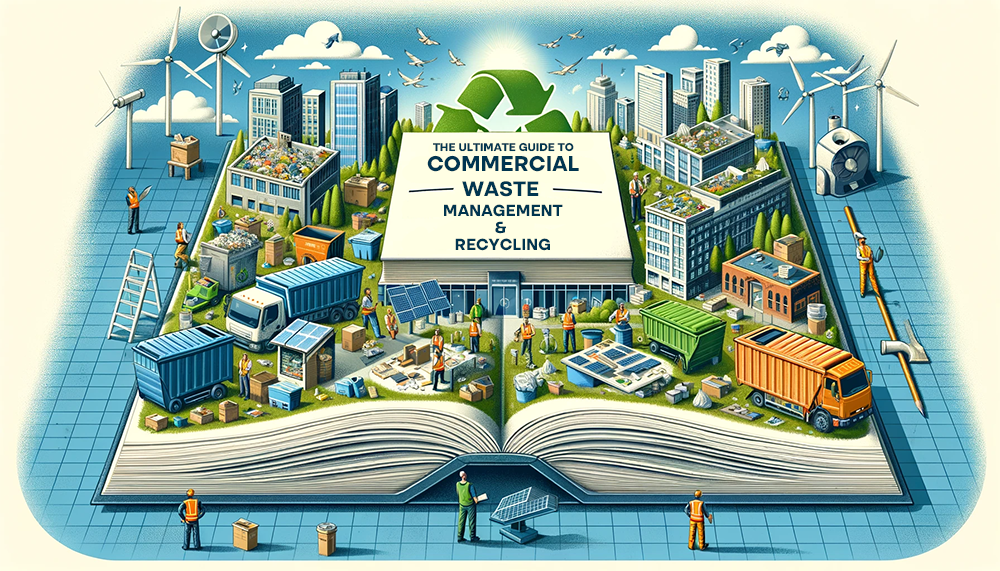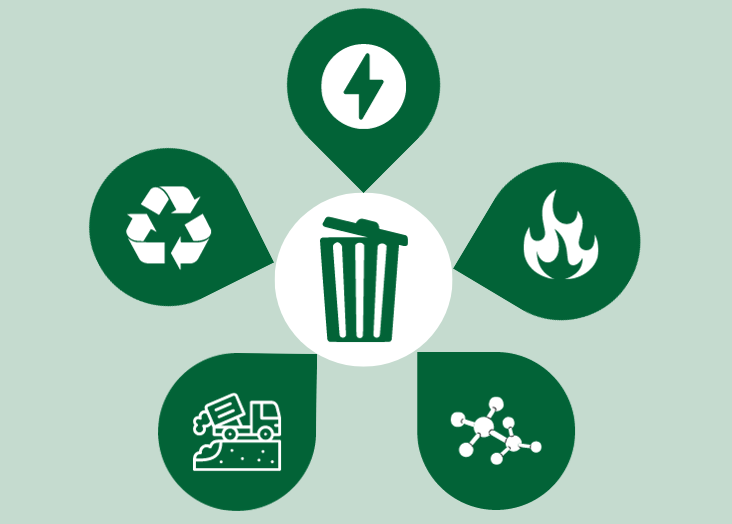Get Included with Recycling Lives Services for a Greener Future
Get Included with Recycling Lives Services for a Greener Future
Blog Article
Discovering Different Types of Waste in Modern Waste Management Equipment
The contemporary landscape of waste administration includes navigating a complicated array of waste types, each needing specialized handling and disposal techniques to minimize environmental effects. Metropolitan strong waste, hazardous waste, electronic waste, and organic waste each present unique difficulties and chances for resource recuperation. Cutting-edge services such as smart waste bins and waste-to-energy modern technologies are becoming important tools in boosting efficiency and sustainability. Understanding these waste types is important for cultivating public awareness and motivating energetic participation in lasting practices. What approaches can successfully address these different sorts of waste while advertising a round economy?
Metropolitan Solid Waste
Municipal solid waste, frequently described as house garbage or garbage, encompasses a selection of thrown out materials created by residential, business, and institutional sources within a town. This waste stream usually consists of things such as product packaging, food scraps, yard trimmings, paper, plastics, fabrics, and thrown out home goods. The management of community strong waste is a vital element of city preparation and public health, demanding reliable collection, transportation, and disposal systems.
Efficient waste administration systems are designed to decrease ecological effect while maximizing resource healing. Composting organic waste, such as food scraps and lawn trimmings, not only reduces land fill usage however also creates important dirt changes.
Districts should also deal with the logistical and financial difficulties linked with waste administration. Implementing pay-as-you-throw systems, boosting public awareness, and buying modern technology can substantially boost waste diversion prices. By incorporating these practices, towns can promote lasting communities, minimize greenhouse gas exhausts, and save natural resources.
Contaminated Materials

Reliable hazardous waste monitoring involves a number of vital actions: recognition, disposal, therapy, and partition. Partition makes certain that dangerous materials are kept individually from non-hazardous waste to protect against cross-contamination.
Regulatory frameworks, such as the Resource Preservation and Recovery Act (RCRA) in the USA, offer guidelines and standards for harmful waste management. Adherence to these laws, coupled with improvements in waste therapy modern technologies, is important in minimizing the dangers connected with contaminated materials.
Electronic Waste
Digital waste, generally described as e-waste, stands for a quickly expanding difficulty in waste administration systems internationally. This kind of waste incorporates thrown out digital devices and tools such as smartphones, computer systems, televisions, and various other digital devices. The quick speed of technical advancement, paired with reducing item life-spans and consumer need for the most up to date tools, has actually exponentially increased the volume of e-waste produced each year.
E-waste is particularly problematic due to its intricate composition, frequently consisting of unsafe materials like mercury, lead, and cadmium, which present significant ecological and health and wellness dangers if not correctly managed. Alternatively, e-waste additionally includes valuable products such as copper, gold, and silver, which can be recouped and recycled. The dual nature of e-waste-- both beneficial and dangerous-- necessitates customized handling, recycling, and disposal processes.
Effective e-waste administration entails strict governing structures, durable collection systems, and advanced reusing technologies. Public recognition and engagement are important, as improper disposal techniques, such as illegal dumping and informal recycling, aggravate environmental contamination and health and wellness hazards. As a result, boosting e-waste monitoring methods is essential for minimizing environmental influence and recovering useful resources in an increasingly electronic globe.

Organic Waste
Organic waste, comprising kitchen scraps, yard trimmings, and farming residues, represents a considerable part of the worldwide waste stream. This sort of waste is eco-friendly, indicating it can be broken down by microbes right into easier natural substances. Despite its capacity for natural decay, inappropriate monitoring of natural waste can result in adverse ecological impacts, including the emission of greenhouse gases such as methane, which add to environment change.
Efficient monitoring of organic waste is essential for minimizing these ecological influences (recycling browse around these guys lives services). Composting is an extensively taken on method, changing natural waste right into nutrient-rich garden compost that can improve dirt health and wellness and farming performance. Additionally, anaerobic food digestion is an arising modern technology that transforms natural waste into biogas, a renewable energy source, and digestate, which can be used as plant food
Municipalities and waste monitoring entities have to carry out robust natural waste collection and treatment programs to make the most of the benefits of these procedures. Public education campaigns can additionally play a pivotal duty in encouraging families and companies to different natural waste from other sorts of waste. By prioritizing the management of natural waste, societies can reduce land fill use, lower greenhouse gas discharges, and produce beneficial results for agricultural usage.

Ingenious Waste Management
In the world of waste administration, ingenious methodologies are changing exactly how cultures manage their refuse, going for sustainability and performance. These developments include a range of innovations and techniques that improve recycling prices, decrease landfill dependence, and reduced environmental impact. One prominent technology is the implementation of smart waste containers outfitted with sensors that monitor fill levels and optimize collection paths. This not just decreases fuel usage but also lessens greenhouse gas exhausts.
One more significant development is the adoption of waste-to-energy (WtE) innovations. By transforming non-recyclable waste into useful energy with processes such as incineration and anaerobic food digestion, WtE decreases landfill concern and provides a renewable resource source. Innovations in chemical recycling allow for the malfunction of complicated plastics right into their original monomers, making it possible for the creation of new, top quality plastic products.
Furthermore, the circular economy model is acquiring grip, emphasizing the style of items and systems that focus on reusability and source effectiveness. This alternative strategy motivates sectors to minimize waste generation from the outset. With these cutting-edge strategies, contemporary waste monitoring systems are not just addressing the prompt difficulties of garbage disposal however also leading the way for an extra sustainable future.
Final Thought
An extensive understanding of community solid waste, hazardous waste, electronic waste, and organic waste, coupled with the implementation of cutting-edge waste administration options, is imperative for mitigating ecological influences. Integrating modern technologies such as wise waste containers and waste-to-energy systems can enhance effectiveness and sustainability. Reliable waste administration methods i was reading this not only foster resource recuperation yet additionally promote public recognition and engagement, ultimately contributing to the development of a round economy.
The contemporary landscape of waste administration involves navigating a complicated variety of waste types, each calling for specialized handling and disposal methods to mitigate ecological impacts. Municipal strong waste, hazardous waste, digital waste, and organic waste each existing distinct difficulties and possibilities for resource recuperation.Electronic waste, commonly referred to as e-waste, represents a click over here quickly growing obstacle in waste monitoring systems globally. Via these ingenious approaches, contemporary waste administration systems are not only attending to the instant challenges of waste disposal but likewise paving the way for a much more lasting future.
A thorough understanding of municipal strong waste, dangerous waste, digital waste, and organic waste, combined with the application of innovative waste management solutions, is important for minimizing environmental effects. (recycling lives services)
Report this page